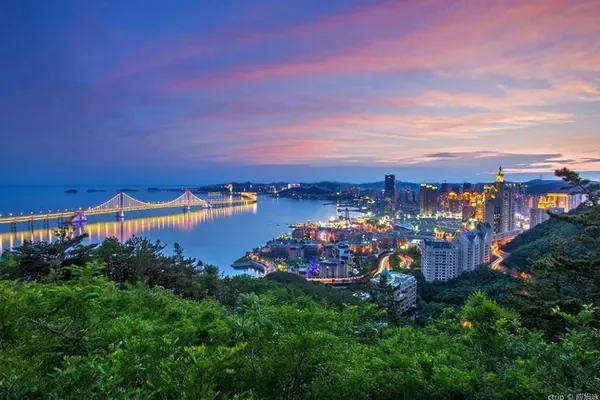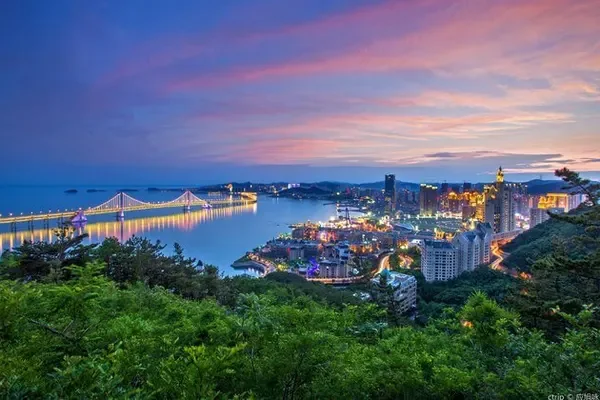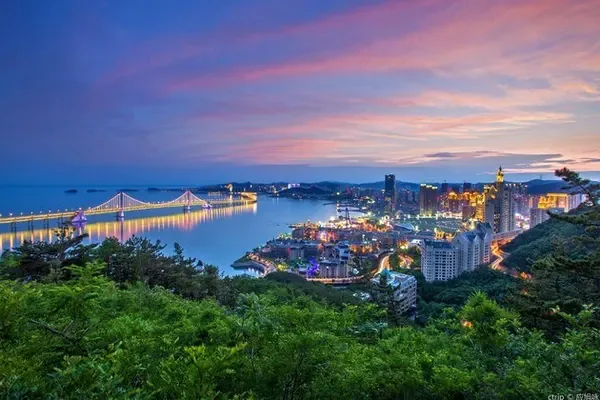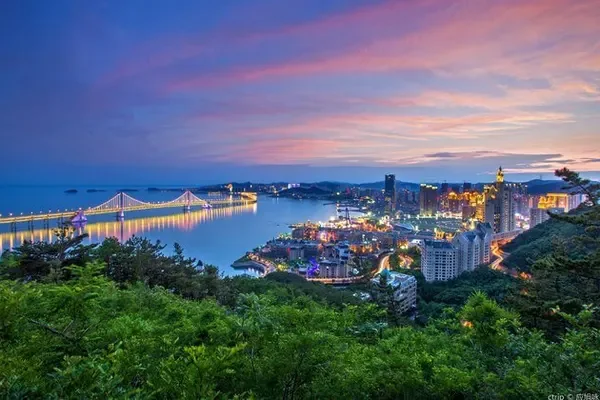Nantongzhou, Beitongzhou, north-south Tongzhou connect north-south. This is a pair of upper couplets issued by Emperor Qianlong to the civil and military officials when he went to Jiangnan. It seems popular, but it clearly outlines the characteristics of the two place names in the north and the south. A Grand Canal connected the two Tongzhous in the north and the south, and became an important waterway in Gyeonggi at that time.

The North Tongzhou here refers to the current Tongzhou District of Beijing, an important node in the northern part of the ancient canal. With the relocation of the Beijing Municipal Government, it has also taken on a new look.

18 years ago, I lived in Tongzhou for a period of time. During the 7-day National Day holiday, I chose to avoid the crowds and return to my hometown to see the new Beijing.
I really complied with that sentence, and with a flick of a finger, I came out of Metro Line 6 and found that I didn’t know Tongzhou at all. The crowded streets of the past have still become a new place, only the ancient tower standing on the street, I can still vaguely recall the changes at the beginning.

This 1-day tour of Tongzhou starts from the famous Three Temples and One Pagoda, and ends at the Canal Park. In just one day, it is like going through hundreds of years in a trance.


The three temples and one pagoda in Tongzhou, also known as the Temple of the Three Religions, consist of the Confucian Confucian Temple, the Taoist Ziqing Palace (also known as the Honghaier Temple), and the Buddhist Yousheng Temple and the affiliated Lantern Pagoda.
Compared with the crowded scenic spots during the National Day, the Sanjiao Temple in the autumn rain seems a bit deserted, only the burning lighthouse still overlooking seems to tell everyone the prosperity here.

First of all, what comes into view is the Dacheng Hall of the Confucian Temple. This Confucian Temple in Tongzhou was first built in the second year of Dade in Yuan Dynasty (AD 1298), four years earlier than the well-known Confucian Temple of Guozijian in Beijing. At present, it can be counted as the oldest Confucian Temple in the Beijing area, and it is also the only remaining Confucian Temple in the prefecture and county.
After entering the Confucian Temple, the central axis follows the Halberd Gate, Pan Bridge, Confucius Statue, and Dacheng Hall.




The two-story supporting halls on the central axis are successively carrying out related exhibitions about Tongzhou and the Grand Canal.





After crossing the Confucian Temple, the Yousheng Temple and the Ziqing Palace are juxtaposed from east to west, forming a "pin" arrangement with the Confucian Temple in front.
Ziqing Palace is on the east side of Youshengjiao Temple. Unfortunately, the gate is closed. I asked the administrator and told me that because there is no Taoist priest to take over, it is temporarily closed. What a pity. According to the introduction before the Taoist temple, because there is the image of Nezha on the murals in the Taoist temple, it is also called the Honghaier Temple. This is still rare on the basis of the existing Taoist temples in Beijing. I look forward to the early development of the temple and accept visits.



At present, among the temples of the three religions, the most lively and prosperous ones are the Yousheng Temple in the west and the Lantern Pagoda in the back.


The entire Youshengjiao Temple consists of the Heavenly King Hall, the Burning Buddha Hall, the Guanyin Hall and the Lantern Buddha Pagoda in the side courtyard.



The Lantern Pagoda in the west courtyard is said to have been established in the Northern Zhou Dynasty. It was once known as one of the eight scenic spots in Tongzhou, that is, "ancient pagoda Lingyun". The tower is 56 meters high and octagonal in shape. It is a solid tower with dense eaves and thirteen-story brick and wood structure. It is said that the purpose of this pagoda is to suppress the river demon in the river in Tongzhou. This pagoda is also one of the four famous pagodas on the Grand Canal. It is only a few hundred meters away from the Grand Canal. Imagine sailing at night and seeing this ancient pagoda, you will know you have arrived in Tongzhou.






It was possible to go directly from Sanjiao Temple to Xihaizi Park, but unfortunately because Beijing and Tongzhou District Government are building an overall image of the canal, it is necessary to detour and just give up. I found a few photos from the website, and put the tombstone of Mr. Li Zhuowu below. (The following 5 pictures are downloaded from the Internet, if there is any infringement, please notify and delete immediately)





Exit the Sanjiao Temple, bypass the community, and enter Xinhua Street. I remember that this was the main road of Tongzhou back then, and many commercial facilities and cultural facilities were on this street. The most famous of these is the Tongzhou Museum.

When I was in Tongzhou back then, whenever I passed by in a car, I always wanted to enter. Unfortunately, I didn't have the opportunity to enter until today, 18 years later.
The entire Tongzhou Museum is small and exquisite, with three courtyards. Although it is not as magnificent as the National Expo and the First Expo, it clearly outlines the history of Tongzhou and even the history of the entire canal in its exquisiteness.










After going to several destinations, I can see the history of Tongzhou and even the Grand Canal, and I want to see the current appearance of the Grand Canal.
After leaving the Tongzhou Museum, walk down the street until you reach the Dongguan Bridge and you will come to the Canal Scenic Area. It is a pity that because of the sudden drop in temperature in Beijing that day, the canal cruises that had just opened were suspended, so we had to come back another day.

I had no choice but to walk along the East Binhe Road of the North Canal, stop and go, and watch the scenery on both sides of the canal. With the improvement of the canal environment, today's North Canal is like a leisure route with unique scenery. Really feel happy for the people living on both sides of the strait.




I walked the section from Dongguan Bridge to Yudaihe Bridge. On one side is the advancing Beijing city sub-center, and on the other side is a leisure and sports venue for citizens. There are also some unique sculptures along the canal, introducing the scenery on both sides of the canal from Hangzhou to Beijing.







Leisure time is short, not bound by time and society, when you are happily wandering in the place you like, you can do whatever you want in a short period of time and become free. In just half a day, from the past of Tongzhou to the sub-center of the city, the ancient canal and the surrounding scenery complement each other, making the tired mood more comfortable.




